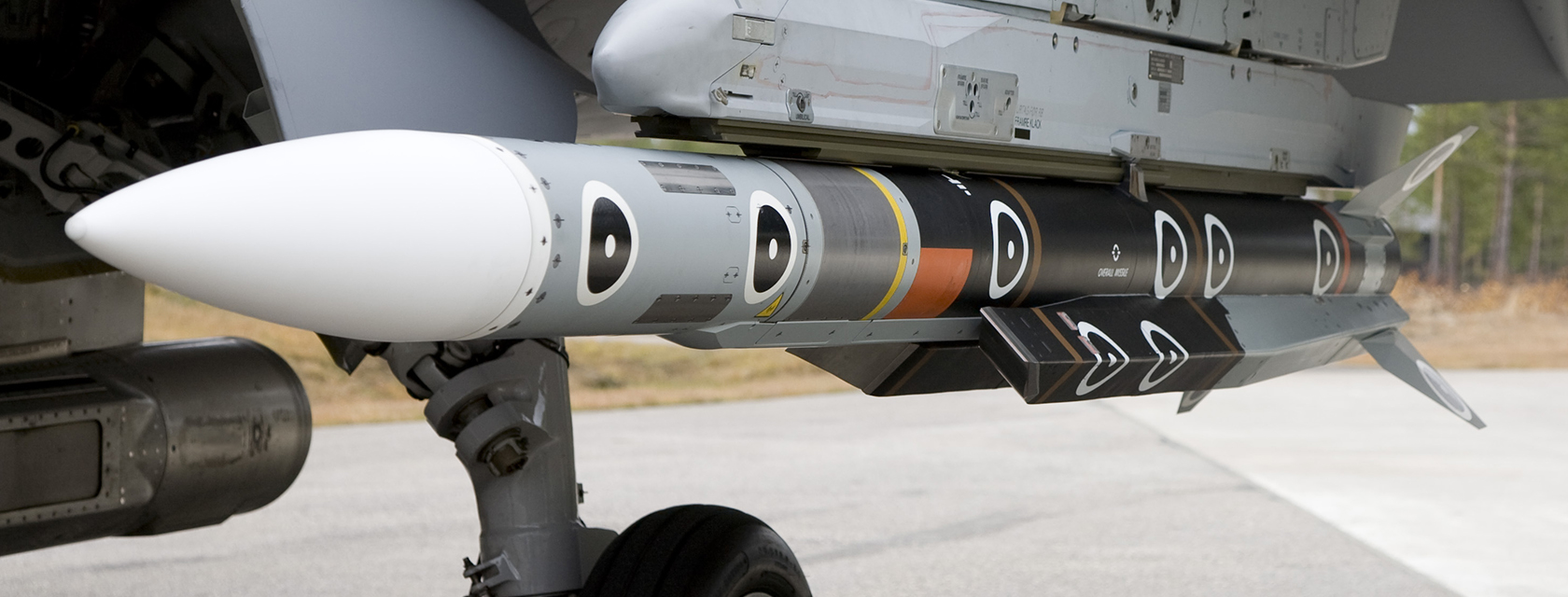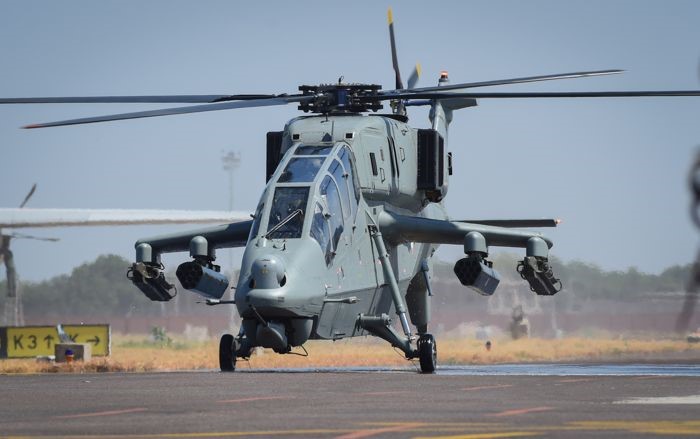Monthly Archives: June 2023
SOURCE: RAUNAK KUNDE / NEWS BEAT / IDRW.ORG


India’s long-awaited plan to acquire 114 fighter jets under the Medium Multi-Role Combat Aircraft (MRFA) tender is set to witness significant progress later this year. The Indian Air Force (IAF) is expected to approach the Ministry of Defense (MoD) to obtain the Acceptance of Necessity (AoN) for the program, which will establish the requirement and secure budget clearance. Subsequently, a Request for Proposal (RFP) will be issued to initiate the procurement process.
In the previous MRCA tender, Eurofighter Typhoon, alongside Dassault Rafale, was the only other aircraft that fulfilled all the technical and Transfer of Technology (ToT) criteria set by the IAF. Ultimately, Dassault Rafale emerged as the winner due to Eurofighter Typhoon’s pricing, despite later offering to match Dassault’s price.
Continue readingSOURCE: RAUNAK KUNDE / NEWS BEAT / IDRW.ORG


The Indian state-owned Hindustan Aeronautics Limited (HAL) and American company General Electric (GE) have reached agreements for the license production of the F-414 engine in India. These engines will power India’s upcoming Tejas MkII fighter jets. However, it is expected that it will take another 3-4 years before the manufacturing of F-414 engines can commence in the country.
Sources familiar with the matter have confirmed idrw that GE has already supplied HAL with over a dozen F-414 engines. These engines will be initially utilized to power the Tejas Mk2 prototypes, scheduled for rollout in late 2025, with an additional three aircraft by 2027.
Continue readingSOURCE: RAUNAK KUNDE / NEWS BEAT / IDRW.ORG


In 2005, the European MBDA Consortium began offering the Indian Air Force (IAF) the integration of the Meteor Beyond Visual Range Air-to-Air Missile (BVRAAM) with its Sukhoi-30MKI fighters. However, by 2018, European manufacturers informed the Indian government that they would not integrate their weapon into any Israeli or Russian Radar, posing a challenge to the IAF’s upgrade plans.
This issue has significant implications for the IAF’s modernization project, including the upgrade of its frontline Sukhoi-30MKI combat planes, which were intended to be equipped with Meteor missiles. The European Meteor missiles, purchased alongside the Rafales, have the potential to be game-changers with their striking capability of over 100 km.
Continue readingSOURCE: RAUNAK KUNDE / NEWS BEAT / IDRW.ORG


The Defence Research and Development Organization’s (DRDO) Electronics and Radar Development Establishment (LRDE) creators of India’s Uttam Fire Control Radar plan to develop an innovative, fully air-cooled fire-control radar. This new radar system aims to offer advanced long-range threat detection, tracking, and targeting capabilities. Notably, it is smaller and lighter than the Uttam Radar, making it a groundbreaking compact active electronically scanned array (AESA) radar that requires less power.
The development of lower-cost, smaller AESA radars is of paramount importance for various aircraft categories, including “attritable” unmanned air vehicles (UAVs) and light-attack aircraft. In recent years, these aircraft types have gained prominence as cost-effective solutions for aerial combat scenarios.
Continue readingSOURCE: RAUNAK KUNDE / NEWS BEAT / IDRW.ORG

Dr Tessy Thomas, renowned as the “Missile Woman of India,” has made an exciting proclamation that India can anticipate the development of large passenger aircraft within the next decade. Dr Thomas, who serves as the Director General of Aeronautical Systems and previously held the position of Project Director for Agni-IV missiles at the Defense Research and Development Organisation (DRDO), shared her optimistic projection during her keynote speech at a program titled ‘Women and Scientific Progress: Enabling Gender Diversity in Aerospace Research.’ The event was organized by the Indian Ladies Association under the patronage of the Indian Embassy in Bahrain.
During her address, Dr Tessy Thomas explained that the timeline for developing large passenger aircraft is estimated at around a decade, primarily due to the necessary establishment of the aero-engine manufacturing capability.
Continue readingSOURCE: RAUNAK KUNDE / NEWS BEAT / IDRW.ORG


Russia and India are set to engage in fresh negotiations to resolve the impasse concerning the indigenous content percentage in the Russian Kamov Ka-226T chopper, which India plans to manufacture locally. The discussions arose from the Russians’ inability to provide the desired 70% indigenous content, with their offer limited to 62%, and that too only in the fourth phase of production.
The Kamov Ka-226T helicopter, intended to replace India’s Cheetah and Chetak helicopters, is powered by French Safran Arrius 2G1 Twin engines, which are not included in the Transfer of Technology (ToT) agreement. However, Hindustan Aeronautics Ltd. (HAL) and Russia are collaborating to identify components that can be included in the ToT to raise the indigenous content to the target level of 70%.
Continue readingSOURCE: RAUNAK KUNDE / NEWS BEAT / IDRW.ORG


India’s state-owned public sector companies are currently exploring the development of a low-cost, expendable, air-launched craft. The objective is to create a system that can deceive enemy-integrated air defence systems by mimicking the flight profiles and signatures of Indian Air Force fighter jets within enemy airspace. This endeavor aims to enhance the effectiveness and safety of Indian combat operations.
According to sources familiar with the matter, the Defense Research and Development Organization (DRDO) labs will spearhead this program. The focus will be on developing a sub-sonic unmanned system capable of operating independently or in pairs. These crafts will fly preprogrammed missions designed to protect other manned jets while simultaneously confusing enemy-integrated air defence systems.
Continue readingSOURCE: RAUNAK KUNDE / NEWS BEAT / IDRW.ORG


The deal to jointly manufacture the potent GE F414-INS6 aero-engine in India for an upgraded version of India’s indigenous Tejas MkII fighter aircraft is inching closer to its conclusion. New details are emerging, shedding light on the level of Transfer of Technology (ToT) and the specific areas that will be covered by this agreement.
The Transfer of Technology for the F414 engine to India is expected to be around 78-80 per cent initially, with the potential to reach 100 per cent over the next decade or more. This progression will depend on the requirements of the Indian Air Force (IAF) and Hindustan Aeronautics Limited’s (HAL) ability to assimilate the advanced technology.
Continue readingSOURCE: RAUNAK KUNDE / NEWS BEAT / IDRW.ORG


India’s ambitious 13-ton Utility Helicopter program, known as IMRH (Indian Multi-Role Helicopter), is set to be executed through a Special Purpose Vehicle (SPV) model. This approach involves the formation of a new consortium that will assume responsibility for production, sales, maintenance, repair, and future upgrades. Hindustan Aeronautics Limited (HAL), the state-owned aerospace company, has been engaging in discussions with several private sector companies that possess the potential to contribute to the program.
Under the SPV model, HAL will maintain a minority stake in the newly formed consortium, with two private sector companies likely to assume leadership roles. The consortium’s primary objective will be to address the potential demand for 400 units of the IMRH from the Indian Armed Forces, as these helicopters are intended to replace the ageing Russian Mi-17 helicopters. By establishing a robust production line, the consortium aims to cater to the requirements of the armed forces for at least two decades.
Continue readingSOURCE: RAUNAK KUNDE / NEWS BEAT / IDRW.ORG


The approval process for India’s twin-engine advanced medium combat aircraft (AMCA) is expected to receive clearance from the Cabinet Committee on Security (CCS) in the coming months. Chaired by Prime Minister Narendra Modi, the CCS is nearing the completion of its review, which gained momentum following the successful completion of the Critical Design Review (CDR) earlier this year. The CDR ensures that the aircraft’s system meets the required performance standards, allowing it to progress into the fabrication, demonstration, and testing stages.
Sources familiar with the matter indicate that the CCS process is likely to conclude by September or October, at the latest. Following the approval, the prototype rollout of the AMCA is scheduled for mid-2026, with the first flight planned for late 2027.
Continue readingSOURCE: RAUNAK KUNDE / NEWS BEAT / IDRW.ORG


UK-based defence company BAE Systems has proposed an upgraded 52-calibre barrel for the Indian Army’s 145 units of the 155mm/39-calibre M777 ultra-lightweight gun system. The company intends to manufacture the new barrel locally in India and provide a specialized kit that will enhance the gun’s range to 40km.
BAE Systems is currently in discussions with an Indian private sector company that will be responsible for carrying out these upgrades, as well as providing spares and logistical support for the gun. The company is keen on developing the upgraded 52-calibre barrel for the M777 ER (Extended Range) in India, with the possibility of exporting it to other countries interested in similar upgrades.
Continue readingSOURCE: RAUNAK KUNDE / NEWS BEAT / IDRW.ORG


The Light Combat Helicopter (LCH) Prachand Production Line is gearing up to assess the production status of India’s indigenous combat helicopter. With the delivery of 10 LCH Limited Series Production aircraft for the Indian Air Force (IAF) nearing completion, the production of the Series Production aircraft is set to commence shortly. This development is a significant step forward in meeting the order for 145 Series Production LCH units, catering to the requirements of both the IAF and the Indian Army.
The LCH, developed by Hindustan Aeronautics Limited (HAL), is a potent combat helicopter designed to excel in high-altitude operations and various challenging environments. It showcases advanced capabilities, including high manoeuvrability, precision strike capabilities, and the ability to operate at altitudes of up to 6,000 meters. With its versatile design and cutting-edge technologies, the LCH is poised to become a vital asset for the Indian armed forces.
Continue readingSOURCE: JOYDEEP GHOSH/ FOR MY TAKE / IDRW.ORG


Pinaka is a multiple barrel rocket launcher or MBRL produced in India and developed by DRDO for use by the Indian Army. The system has multiple variants including a 40 km Mark-I and 60 km Mark-I Enhanced to start with. The rockets can be fired in a salvo of 12 rockets in mere 44 seconds.
Mounted on a Tatra truck Pinaka, inducted into the Indian Army in late 1990s in large numbers has been effectively used in the 1999 Kargil War to neutralize entrenched Pakistani positions on difficult to climb mountain tops. Pinaka was developed as a replacement to the aging BM21 Grad MBRL, the soviet origin rockets that have been in service with Indian Army for over 4 decades. Each Pinaka battery consists of 6 launcher vehicles, each with 12 rockets; 6 loader-replenishment vehicles; 3 replenishment vehicles; 2 Command Post vehicle with Fire Control computer, and DIGICORA MET radar. A battery of six Pinaka launchers can neutralize an area of 1,000 mtrs × 800 mtrs.
Continue readingSOURCE: RAUNAK KUNDE / NEWS BEAT / IDRW.ORG
_1622711543538_1622711546620.png)

According to recent reports in the Times of India, the Defence Ministry is expected to give the green light to a deal involving 30 American Predator drones with strike capabilities.
The Indian Navy is now considering acquiring 14 units, while the Army and Air Force are slated to procure 8 units each. This shift in unit allocation may lead to the abandonment of the earlier plan to reduce the order quantity to 18 units.
Continue readingSOURCE: RAUNAK KUNDE / NEWS BEAT / IDRW.ORG


Arun T Ramchandani, the Executive Vice President & Head of L&T Defence, has provided an update on the progress of the Light Tank prototype being developed at L&T’s Armoured Systems Complex in Hazira, Gujarat. The prototype, weighing between 25 to 30 tons, has reached an advanced stage of development. Ramchandani states that the company is on track to conduct trials and demonstrations for the Indian Army soon.
According to sources close to idrw, the rollout of the Light Tank is scheduled to occur within the next two months. This milestone event will be followed by an official showcase of VVIPs, potentially before Independence Day.
Continue reading